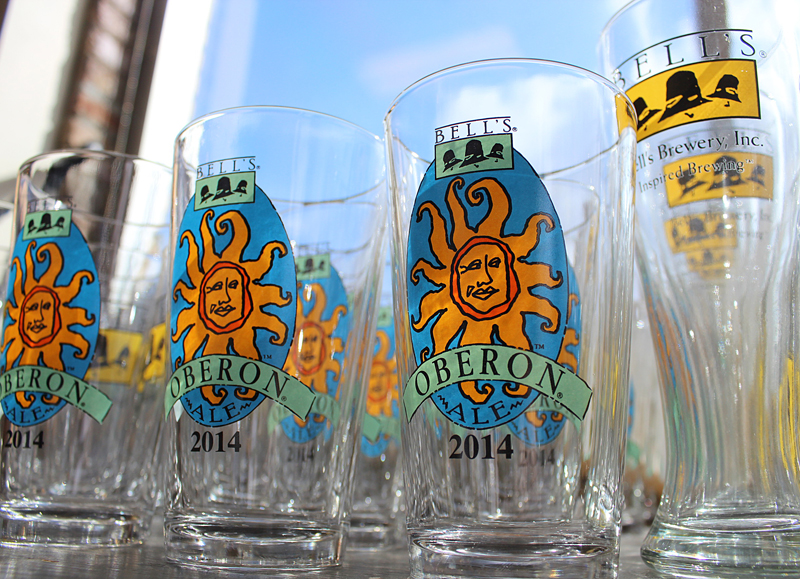To Everything There is a Seasonal: Flagship Seasonal Beers

Some seasonal beers are so popular that they outsell flagship brews that are sold year-round at their respective breweries.
Pat Conway recalls the visit to the Great Lakes Brewing gift shop by an uber-fan late in 2012. “This one guy offered us $3,000 on the spot for 60 cases of Great Lakes Christmas Ale,” remembers Conway, co-founder of the Cleveland brewery. While the final purchase was scaled back some, the anecdote demonstrates the price some beer lovers will pay to load up on their favorite limited-release brews.
There’s no question that a number of seasonal-only beers—including Great Lakes Christmas Ale—are enjoying cult status. In fact, some seasonals have become so popular and so coveted that they have emerged as the top-selling labels at their respective breweries, outselling flagship brews that are sold year-round. Moreover, seasonal brews at large have become such a phenomenon that there are now a few brewery startups which produce only seasonals.
Up until last year, seasonal beers were the No. 1 category in both volume and dollar sales among craft beers (surging IPAs moved ahead in both measurements in 2013, according to the Brewers Association). But the seasonal offerings are hardly a creation of today’s modern craft-brewing sector. “The idea of brewing to match the seasons really dates back centuries,” notes Jim Koch, founder of Boston Beer Co. “Historically, brewers would make lighter beers in the summer and heartier ones for sustenance in the winter. They also used seasonal ingredients they had on hand, like fruit, herbs and spices, to enhance their brews.”
Boston Beer was one of the first modern brewers to roll out a year-round seasonal program and introduced its first Samuel Adams seasonal beer (Double Bock) in the late 1980s. “Although nowadays we have the ability to brew beers with a variety of ingredients year-round, there’s still something special about celebrating a certain time of year, using seasonal ingredients and highlighting each season’s unique character,” remarks Koch.
Sales of Great Lakes Christmas Ale were expected to surpass those of year-round Dortmunder Gold in 2013, becoming the brewery’s top-selling label despite only a seven-week sales window. “Exclusivity doesn’t hurt,” Conway says of the sensational demand for the beer—available in only 13 states. It has been produced annually for the last 20 years—has received a warm response from beer aficionados and novices alike, he says, as beer enthusiasts have found it a great value and mainstream beer drinkers haven’t been intimidated. “It’s very costly to produce; in 2013 we spent $500,000 on honey alone,” reports Conway, “but the flavor profile is very balanced. It doesn’t scream honey. It doesn’t scream cinnamon.” In fact Christmas Ale was such a hot commodity that in 2012 it was the top-selling beer in dollar sales in Cleveland for the last 13 weeks of the year, the brewery said.
The story is much the same for Bell’s Brewery’s summer seasonal Oberon Ale. The wheat ale outsells the Michigan brewery’s year-round flagship Two Hearted Ale and meets with great fanfare upon its release every spring. Oberon release parties are all the rage in Michigan bars, reports Laura Bell, vice president and director of marketing, with events now staged in Chicago, Indiana, Wisconsin and Minnesota.

In 2013, one pint was poured every 15 seconds for 15 hours straight on Oberon Release Day. Photo credit Bell’s Brewery, Inc.
Jacob Leinenkugel Brewing’s Summer Shandy has also emerged as a top-seller at the company, part of MillerCoors’ Tenth and Blake division. First launched in 2007 in core Midwestern markets, Summer Shandy achieved national distribution in 2013. Shipments jumped 24 percent last year despite availability that runs only from March through August. Summer Shandy became such a hit that the Shandy line was been extended with Orange Shandy (available September to February) and even the year-round Lemon Berry Shandy.
Brewers have become so taken with the opportunity seasonal beers provide that there are now a few seasonal-only breweries. Mystery Brewing of Hillsborough, NC, offers four beer styles—session, hop-forward, saison and stout—at any one time, with each style seasonally rotated, such as Lockwood’s Retreat American IPA in summer and Hornigold English IPA in winter. Seasonals speak to the variety that is so important to beer drinkers, says Erik Lars Myers, founder and CEO of Mystery. Indeed, he believes that the practice of offering year-round flagship beers was “born out of a false sense that there should be just one choice from a brewery. As small craftsmen, craft brewers don’t have to fit into that mold.” Cincinnati’s Blank Slate Brewing, meanwhile, is dedicated to “building a mystique by producing different, unique styles” throughout the year, explains owner Scott LaFollette. Among Blank Slate’s portfolio of seasonal beers are the likes of Fork in the Road India amber ale (fall) and The Lesser Path India white ale (spring/summer). Both LaFollette and Myers report that they decided on the seasonal-only model for their businesses when they discovered the strong trends for seasonal beers.
While brewers report of the challenges that seasonal beers create for their operations, such as accurate forecasting, supply and transitioning from one seasonal to the next, they maintain that the quarterly offerings help keep the category exciting and that it is the beer consumer who is the ultimate winner. “With seasonals, consumers can look forward to something new,” explains LaFollette. “I like to drink seasonably. And I want to brew that way, too. Seasonals help to keep things fresh.”

Leave a Reply